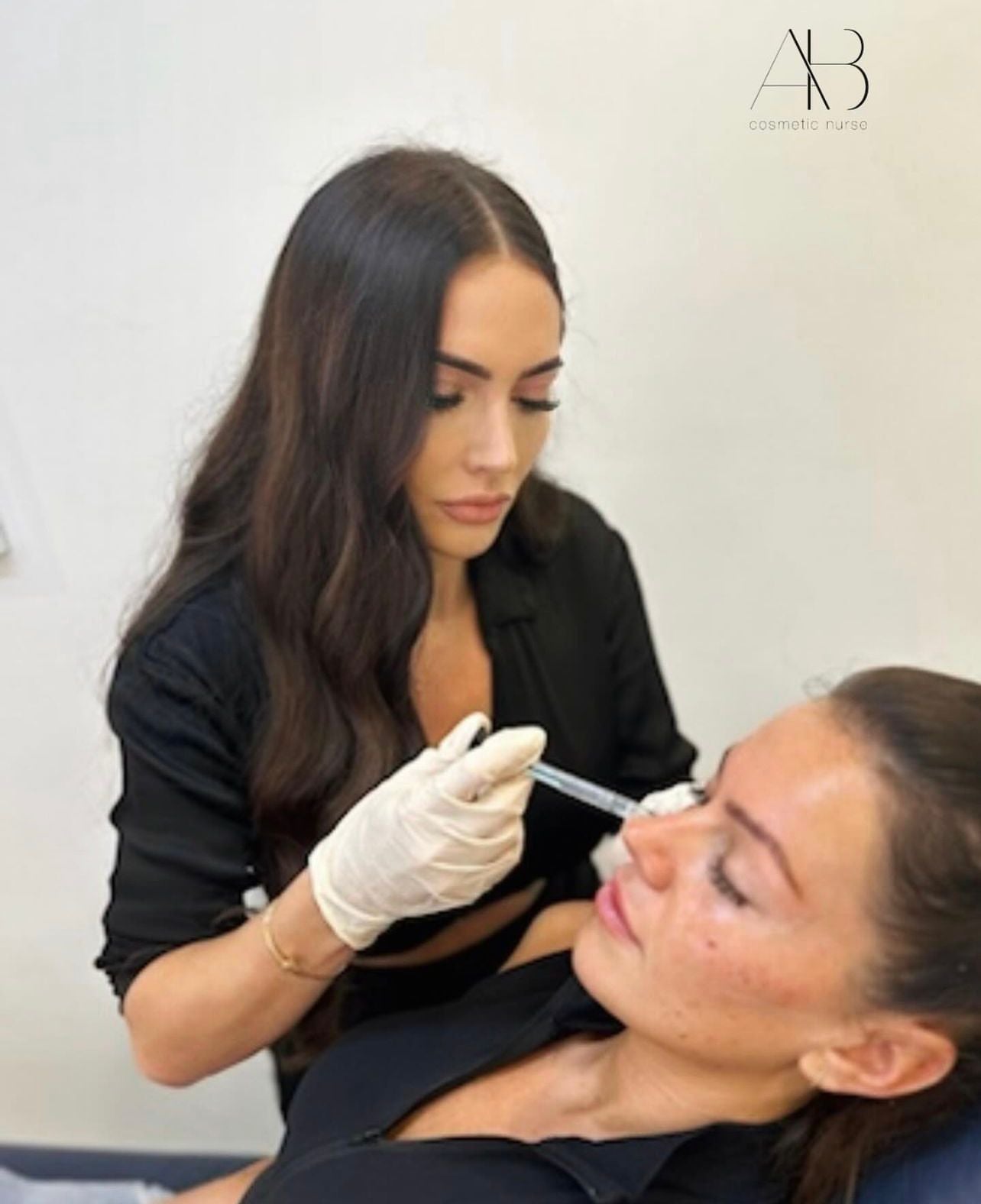Gummy Smile
A gummy smile is a condition where a person’s smile reveals an excessive amount of gum tissue above the upper teeth, often considered more than 3 - 4 millimetres of visible gum. This can make some people feel self-conscious about their smiles. One of the non-surgical treatments for a gummy smile involves the use of botulinum toxin, commonly known as Botox.
How Botox Treats a Gummy Smile:
- Identification of Target Muscles: The primary cause of a gummy smile is often the hyperactivity of certain muscles that elevate the upper lip, specifically the levator labii superioris alaeque nasi muscle and the levator labii superioris muscle.
- Botulinum Toxin Injections: Botox is injected into these muscles to temporarily weaken them. The injection sites are typically on either side of the nose, where these muscles are located.
- Reduced Lip Elevation: As the Botox takes effect, usually within a few days, it reduces the ability of these muscles to elevate the upper lip as much when smiling. This results in the upper lip covering more of the gum line.
- Subtle and Natural Results: The reduction in muscle activity allows the upper lip to rest in a lower position when smiling, creating a more balanced and aesthetically pleasing smile without showing too much gum.
Key Points:
- Minimal Invasiveness: This is a non-surgical, minimally invasive procedure with no significant downtime, making it an appealing option for many patients.
- Temporary Effect: The effects of Botox for treating a gummy smile are temporary, typically lasting 3 to 4 months before the muscle activity gradually returns to normal, at which point repeat treatments may be needed.
- Quick Procedure: The entire process is quick, often taking less than 10 minutes, with minimal discomfort due to the fine needles used.
Ideal Candidates:
This treatment is suitable for individuals with mild to moderate gummy smiles caused by hyperactive lip muscles. It's a good option for those looking for a non-permanent, non-invasive solution and who prefer not to undergo surgery.
Overall, using botulinum toxin to treat a gummy smile is a safe and effective way to achieve a more harmonious smile, improving confidence with minimal intervention.
1. What is a gummy smile?
A gummy smile occurs when an excessive amount of gum tissue is visible when you smile. This can be due to an overactive upper lip muscle, which causes the lip to rise too much and reveal more of the gums.
2. How does botulinum toxin treat a gummy smile?
Botulinum toxin is injected into the muscles around the upper lip. This relaxes the muscles responsible for elevating the lip, thereby reducing the amount of gum that is visible when you smile.
3. How is the procedure performed?
The procedure involves a series of small injections of botulinum toxin into specific muscles around the upper lip. It is a minimally invasive procedure and usually takes about 10-15 minutes.
4. Is the treatment painful?
Most patients experience only mild discomfort during the injections. The needles used are very fine, and a topical anaesthetic or ice can be applied to minimize any discomfort.
5. How soon will I see results?
You can typically see initial results within 3-5 days, with the full effect becoming visible within 1-2 weeks. The upper lip will start to relax and cover less of the gums when you smile.
6. How long do the results last?
The effects of botulinum toxin for a gummy smile usually last between 3 to 6 months. To maintain the desired results, follow-up treatments will be needed.
7. Are there any side effects?
Common side effects include mild swelling, redness, or bruising at the injection sites. Some patients may experience temporary asymmetry or difficulty with lip movement. Most side effects are temporary and resolve within a few days.
8. Who is a good candidate for this treatment?
Good candidates are individuals who have an overactive upper lip muscle causing excessive gum visibility when they smile. A consultation with a qualified provider will help determine if the treatment is appropriate for you.
9. Is the treatment safe?
When administered by a trained and experienced practitioner, botulinum toxin injections are considered safe. It’s important to choose a licensed and qualified professional to ensure proper technique and minimize risks.
10. Can this treatment be combined with other procedures?
Yes, botulinum toxin treatment for a gummy smile can be combined with other cosmetic procedures, such as dermal fillers or aesthetic treatments, for enhanced results. Your provider can help create a comprehensive treatment plan.
11. What should I do before and after the procedure?
Before the procedure, avoid alcohol and blood-thinning medications to reduce the risk of bruising. After the procedure, follow any aftercare instructions provided by your practitioner, such as avoiding rubbing or massaging the treated area for a few hours.
12. How much does the treatment cost?
The cost of treating a gummy smile with botulinum toxin varies depending on the provider, the number of units used, and your location. Prices are typically quoted per unit or per treatment session. A consultation will provide a more accurate cost estimate.
13. Will the treatment make my smile look unnatural?
When performed by a skilled practitioner, the treatment aims to enhance the natural appearance of your smile without making it look unnatural. The goal is to reduce the excessive gum exposure while maintaining a natural and balanced smile.
14. How do I choose the right provider for this treatment?
Choose a provider who is licensed, experienced, and qualified in administering botulinum toxin injections. Look for reviews, ask about their experience with treating gummy smiles, and ensure they provide a thorough consultation before the treatment.
15. Are there any alternative treatments for a gummy smile?
Yes, alternatives include surgical options such as gum contouring or lip repositioning surgery. Your provider can discuss these options with you based on the severity of your gummy smile and your treatment goals.

